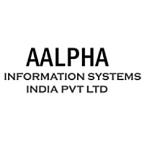DevOps Testing Best Practices
Firms have extensively used DevOps services to improve the quality and timeliness of software delivery. DevOps enables efficient collaboration between the development and operations teams. It enables teams to plan more effectively, communicate effectively, and complete projects successfully.
Automation was critical in standardizing and speeding up DevOps procedures. This section will discuss DevOps, testing inside DevOps, the advantages, and best practices of DevOps testing methodologies.
What is DevOps?
Agile and DevOps are distinct techniques. They have certain similarities, as individuals that work with Agile will likely embrace DevOps readily.
DevOps is an acronym for development and operations, and it focuses on continuous improvement. i.e., the software developed, deployed, tested, and confirmed in a ready-to-use production environment.
DevOps is a process that focuses on modernizing regions and assuring their growth. The purpose of the idea is to expedite the delivery of functional software and reduce bottlenecks.
Importance of Quality Assurance in DevOps
DevOps is a team effort and critical QA inclusion into the development and testing cycles. DevOps ensures quality throughout the project’s lifecycle and strongly encourages continuous testing.
Traditionally, the quality team entered the project to validate the program and had no role during the earliest stages of application development.
Advantages of a DevOps Testing Strategy
Continuous testing is used in DevOps testing. The following are the advantages of a thorough DevOps testing approach.
Various functional testing techniques are used in DevOps projects, including unit testing, integration testing, regression testing, API validation, and cross-browser validation. Similarly, DevOps incorporates non-functional testing categories such as usability, security, reliability, and scalability testing.
Testing every version’s build-in eliminates risks that might jeopardize the timely delivery of builds. Continuous review of the construction process would aid in the elimination of hazards at each step.
Regular user input enables developers to identify and resolve issues and make continual improvements to the product. It enables the creation of test cases from a functional standpoint that is run following the requirements for evaluating the end-user experience-DevOps testing aids in maintaining robust and reliable software.
By integrating and using the appropriate test automation technologies, DevOps provides platform coverage. This method enables rapid delivery.
The critical necessity of the hour is to get feedback to make necessary corrections concurrently within a day. Historically, developers have had to revisit code weeks after it was built owing to late input. DevOps enables more rapid feedback and delivery.
Organizations have embraced DevOps wholeheartedly. The intriguing aspect of DevOps is that each team member has an equal and critical function. The DevOps team is united in its mission to create safe, reliable, and high-quality software.
Best testing Practices in DevOps
Choosing a foundation for test automation might be difficult for enterprises. A thorough software review is necessary before developing a DevOps testing approach. The following are some critical elements to consider while developing a good test plan.
It is critical to test functional regions, and hence we must build end-to-end tests. End-to-end tests cover all possible situations for each module and do not rely just on unit tests. The tests provide a collection of test cases that demonstrate coverage breadth, increasing trust and confidence in the project’s delivery.
Continuous code integration is maintained in DevOps, which ensures that the application is always available for continuous testing. Testing the application at various stages might aid in delivering higher-quality goods.
Given the frequency with which the code is changed, the ideal practice includes unit, functional, integration, and regression testing. By using various testing techniques, you may minimize the likelihood of mistakes and failures and boost application performance.
Kanban boards are a component of the agile approach, which premium project delivery efficiency. The team can communicate and work more effectively with crucial features, including a visual representation of the project’s progress, problems, and changes. The board provides a clear picture of pipeline constraints and helps to improve the process roadmap.
Testing tools facilitate the tester’s job if the tester has the necessary experience and abilities to analyze and utilize the tool. Budget considerations also come into play when discussing automated testing technologies. Several DevOps testing tools are labeled as follows:
- Monitoring Instruments
- Tools for Version Control
- Tools for Continuous Delivery
- Tools for DevOps Testing
There are several DevOps tools available on the market. These solutions aid in time savings by automating the development integration and delivery processes.
Conclusion
Applications’ behavior is evolving daily and becoming more robust. DevOps is the optimal choice for many firms seeking to increase or retain market competitiveness. While DevOps might accelerate development, only a robust QA plan can ensure a project’s success.
Any queries? contact software development company & get a free consultation from experts.
Originally published at https://www.aalpha.net on January 21, 2022.
